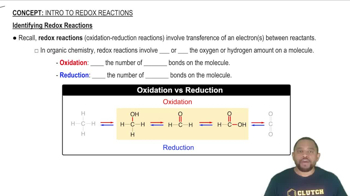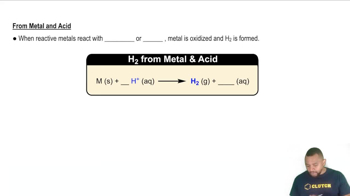Here are the essential concepts you must grasp in order to answer the question correctly.
Redox Reactions
Redox reactions involve the transfer of electrons between two species, leading to changes in oxidation states. In these reactions, one species is oxidized (loses electrons) while another is reduced (gains electrons). Understanding redox processes is crucial for predicting how metals will react with acids, such as HCl, and determining the products formed.
Recommended video:
Identifying Redox Reactions
Metal Reactivity with Acids
The reactivity of metals with acids is determined by their position in the reactivity series. More reactive metals, like zinc and magnesium, readily dissolve in acids, displacing hydrogen ions and forming metal ions. In contrast, less reactive metals, such as copper, do not react significantly with dilute acids, which is essential for predicting whether a metal will dissolve in HCl.
Recommended video:
Balanced Chemical Equations
A balanced chemical equation represents a chemical reaction with equal numbers of each type of atom on both sides of the equation. Balancing is essential for accurately depicting the stoichiometry of the reaction, including the reactants and products. In the context of metal dissolution in HCl, writing a balanced equation helps illustrate the transformation of the metal and the generation of hydrogen gas.
Recommended video:
Balancing Chemical Equations




